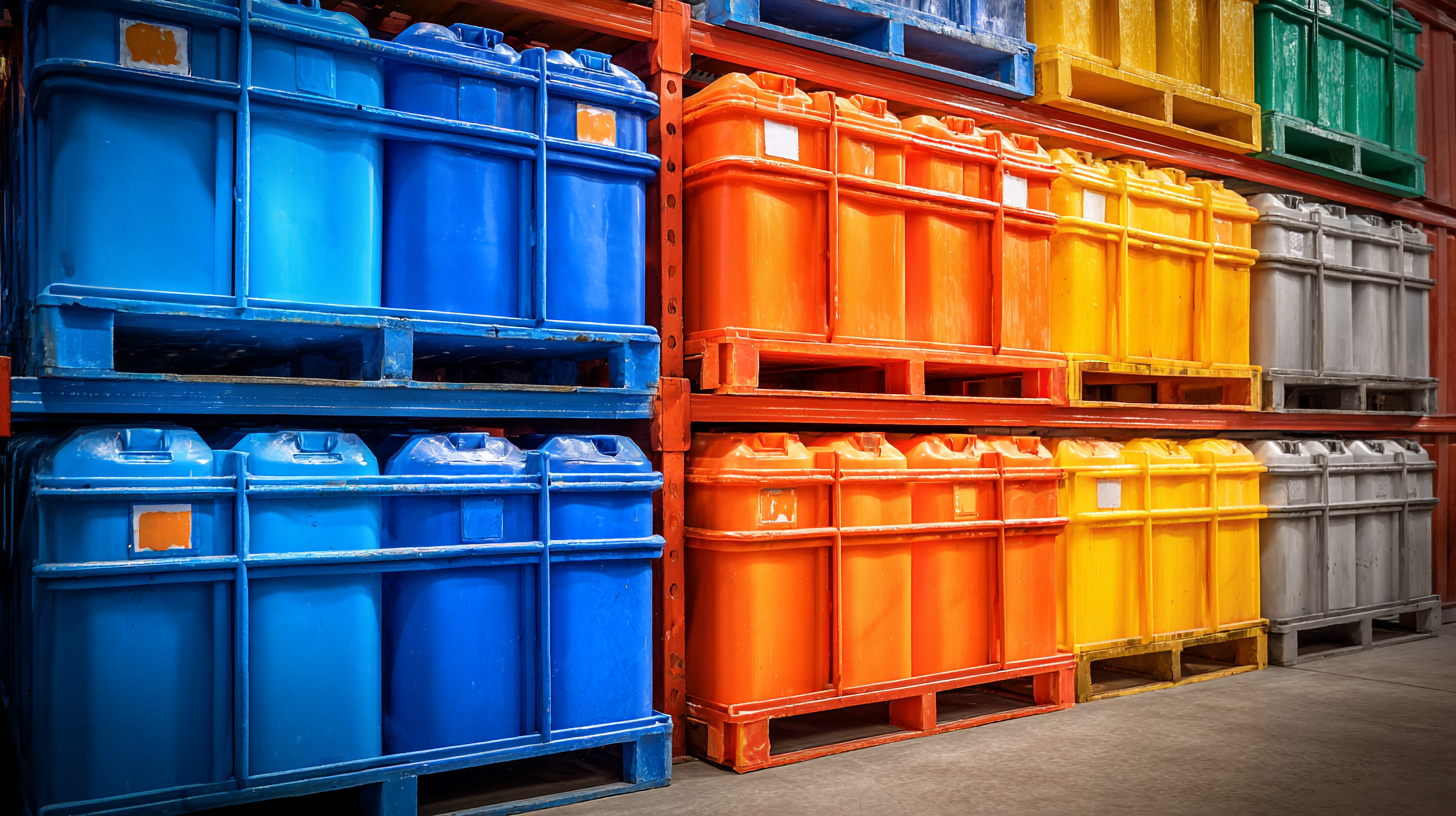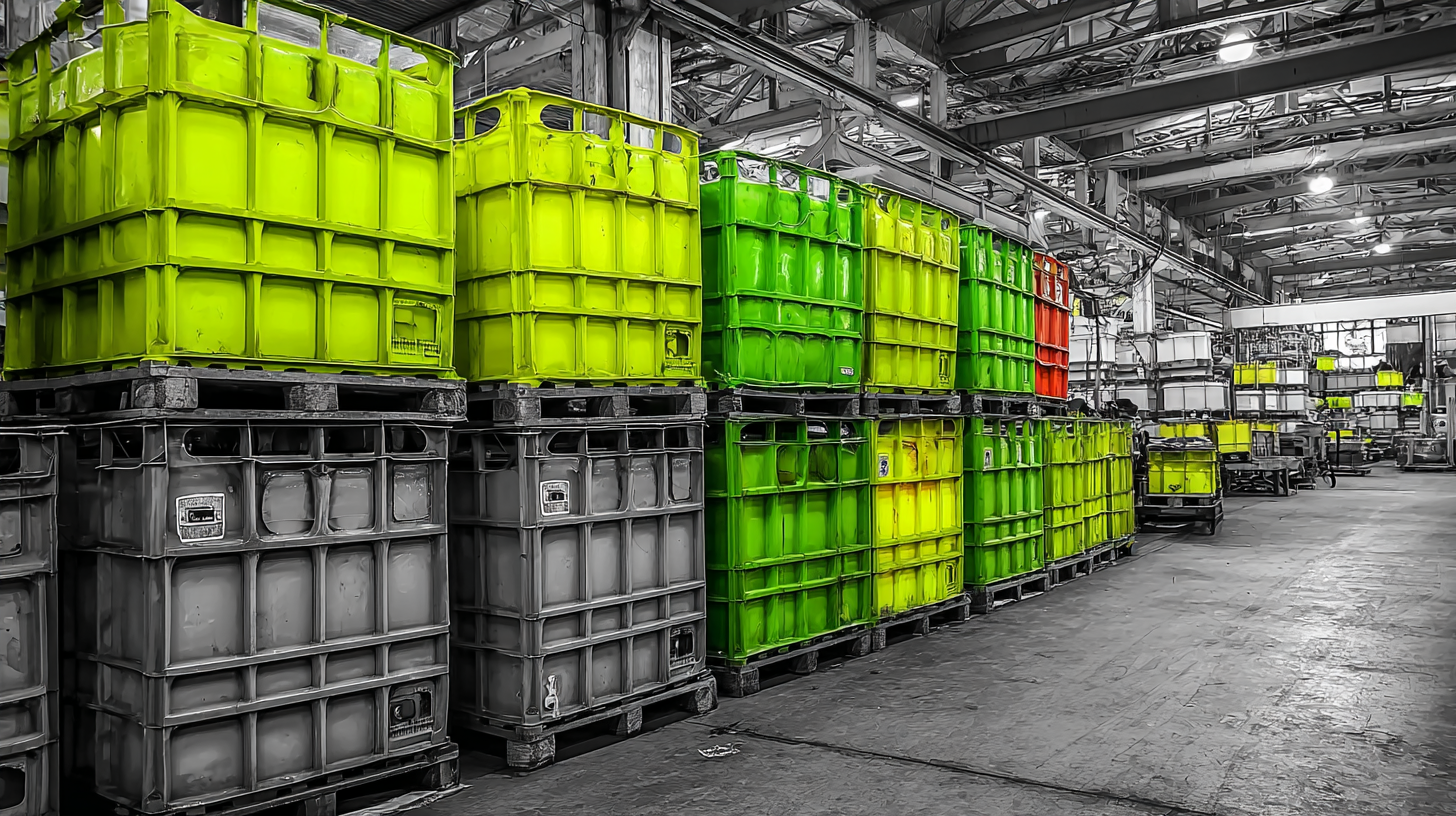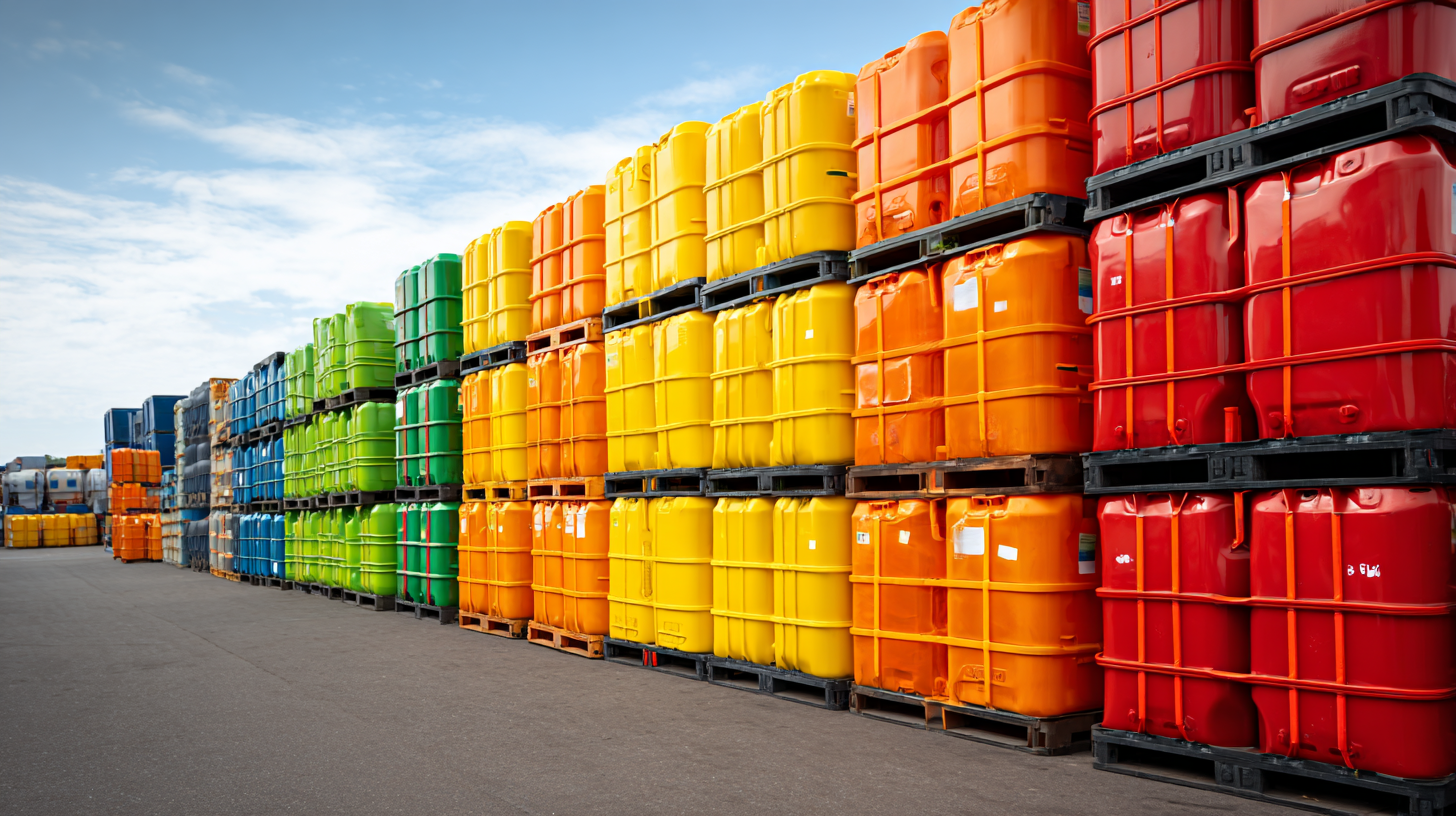
Blog
2025 Trends in Plastic Bulk Containers: A Comprehensive Guide to Innovations and Best Practices
In recent years, the plastic bulk containers market has witnessed significant growth, driven by the increasing demand for efficient packaging solutions across various industries. According to a report by Grand View Research, the global plastic bulk containers market size is expected to reach USD 6.56 billion by 2025, growing at a CAGR of 5.9%. This rise can be attributed to innovations in design, material, and functionality that address both environmental concerns and the need for cost-effective logistics.

As businesses strive to enhance their sustainability practices, the adoption of reusable plastic bulk containers has become a best practice for reducing waste and optimizing supply chains. In this comprehensive guide, we will explore the latest trends, technological advancements, and best practices related to plastic bulk containers, providing valuable insights for companies looking to stay ahead in this competitive landscape.
Emerging Sustainability Practices in Plastic Bulk Container Manufacturing
As sustainability becomes a driving force in the manufacturing sector, the plastic bulk container industry is witnessing remarkable innovations that prioritize environmental responsibility. According to a recent report by the International Plastic Packaging Association, nearly 70% of manufacturers are now integrating recyclable materials into their production processes, signaling a significant shift towards eco-friendly practices. This trend not only reduces the reliance on virgin plastics but also aligns with the growing consumer demand for sustainable products.
In addition to using recycled materials, emerging technologies such as bioplastics are making waves in the industry. A study by Grand View Research forecasts a compound annual growth rate (CAGR) of 17.4% in the bioplastics market, driven by increasing environmental regulations and a shift towards circular economy models. Manufacturers of plastic bulk containers are adopting biobased and biodegradable options, offering customers the opportunity to minimize their ecological footprint. These advancements showcase a commitment to sustainability while meeting the logistical needs of various industries, paving the way for a greener future in plastic bulk container manufacturing.

Key Technological Innovations Shaping the Future of Bulk Packaging
As the landscape of bulk packaging evolves, several key technological innovations are reshaping the future of plastic bulk containers. New injection molding technologies are emerging as an ideal solution to address global demands for sustainability and net-zero carbon emissions. These advancements not only provide multifunctional packaging solutions but also significantly reduce plastic consumption, marking a pivotal shift towards environmentally conscious practices in the industry.
For instance, reports indicate that the food packaging technology market is projected to grow steadily, reflecting a strong trend towards eco-friendly materials and practices. Folding Intermediate Bulk Containers (IBCs) have gained recognition for their innovative design, combining strength and flexibility with reduced environmental impact. Such technologies are paving the way for a more sustainable supply chain, as shown by recent global innovation awards recognizing advancements in zero-carbon packaging solutions.
Tips: When considering bulk packaging options, prioritize suppliers who emphasize sustainable practices and innovative materials. Additionally, keep an eye on market trends, as consumer preferences shift toward environmentally friendly products, which can influence your packaging choices. Being proactive in adopting these innovations can enhance your brand's reputation and appeal to eco-conscious consumers.

Consumer Trends Driving Changes in Plastic Bulk Container Design
In recent years, consumer trends have significantly influenced the design of plastic bulk containers, pushing manufacturers to innovate and adapt to evolving market demands. One of the prominent shifts is the emphasis on sustainability. Consumers are increasingly aware of environmental issues, prompting a demand for recyclable and biodegradable materials in plastic bulk containers.
Manufacturers are exploring options such as bio-based plastics and incorporating recycled content to create more eco-friendly products. This movement not only helps brands align with customer values but also enhances their marketability.
Another key trend is the focus on functionality and efficiency. As businesses seek to optimize their operations, the design of bulk containers has evolved to prioritize ease of use, storage, and transportation. Features such as stackability, lightweight materials, and ergonomic designs are becoming standard. Additionally, the integration of smart technology, like QR codes for tracking and inventory management, is gaining traction.
This allows companies to streamline their processes and improve the overall user experience, reflecting a broader trend towards digitalization in logistics. As these consumer preferences shape the industry, we can expect continuous innovation in the design and functionality of plastic bulk containers in the coming years.
Best Practices for Efficient Use and Reuse of Plastic Bulk Containers
The efficient use and reuse of plastic bulk containers have become essential in addressing sustainability challenges within the logistics and manufacturing sectors. According to a recent report from the Plastics Industry Association, around 30% of plastic containers are currently recycled, but there's significant potential for improvement. Implementing best practices can enhance reuse rates, such as adopting a standardized container design that facilitates washing and repurposing, thus extending the lifecycle of these products. The use of RFID technology can also streamline inventory management, allowing businesses to track the utilization and condition of each container.
Moreover, industry trends indicate a growing adoption of eco-friendly materials, with a projected increase of 15% in the use of bioplastics by 2025, as reported by the Global Bioplastics Market Analysis. These developments not only support sustainable practices but also promote cost savings for businesses. By prioritizing the reuse of plastic bulk containers and investing in innovations, companies can significantly minimize waste and improve their overall environmental footprint, ensuring a more sustainable future for the packaging industry.
Future Regulations and Their Impact on the Plastic Bulk Container Industry
As the global focus on sustainability intensifies, the plastic bulk container industry must adapt to emerging regulations aimed at reducing environmental impact. In 2025, we can expect stricter government policies governing plastic production, usage, and disposal. These regulations will not only target single-use plastics but will also address the life cycle of bulk containers, urging manufacturers to adopt practices that minimize waste and enhance recyclability. Companies will need to collaborate closely with regulatory bodies to ensure compliance while innovating new materials and designs that meet these evolving standards.
The anticipated regulations also promise to spur innovation within the industry. Manufacturers will increasingly explore alternative materials such as bioplastics or recycled plastics. Furthermore, the adoption of advanced technologies like smart containers equipped with sensors may become more commonplace, enabling better tracking and management of bulk containers throughout their supply chain. As businesses adapt to meet regulatory demands, those that proactively invest in sustainable practices and innovative solutions will not only align with legal requirements but will also position themselves as leaders in an environmentally conscious marketplace.
2025 Trends in Plastic Bulk Containers: A Comprehensive Guide to Innovations and Best Practices
| Trend | Description | Impact on Industry | Future Regulations |
|---|---|---|---|
| Sustainability | Increase in biodegradable and recyclable materials in production. | Promotes circular economy and reduces environmental footprint. | Stricter regulations on non-biodegradable materials. |
| Smart Packaging | Integration of technology for tracking and monitoring. | Enhances supply chain efficiency and reduces loss. | Potential regulations on data security and consumer privacy. |
| Lightweighting | Development of lighter materials to reduce shipping costs. | Lower carbon emissions during transportation. | Regulations may require testing for durability. |
| Modular Design | Containers designed for multiple uses and configurations. | Increases storage efficiency and adaptability. | Focus on standardization may arise. |
